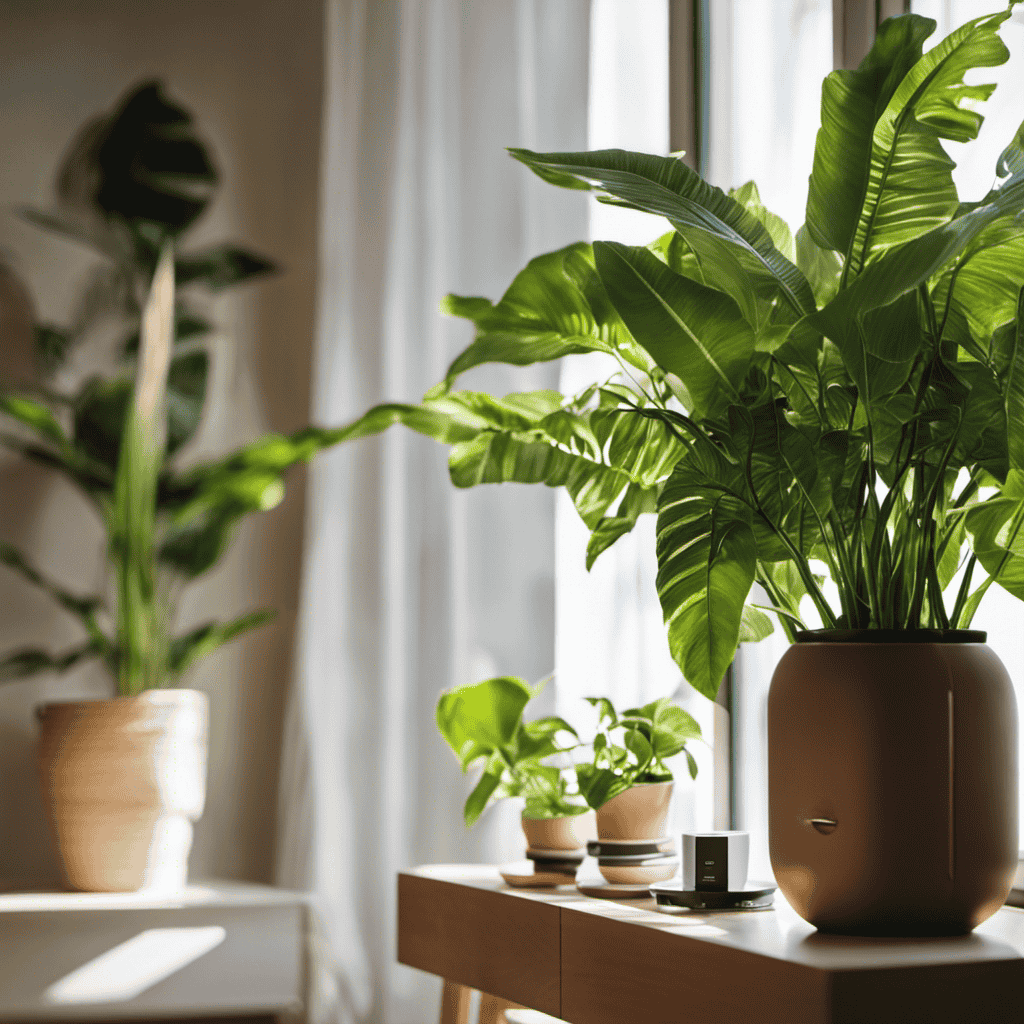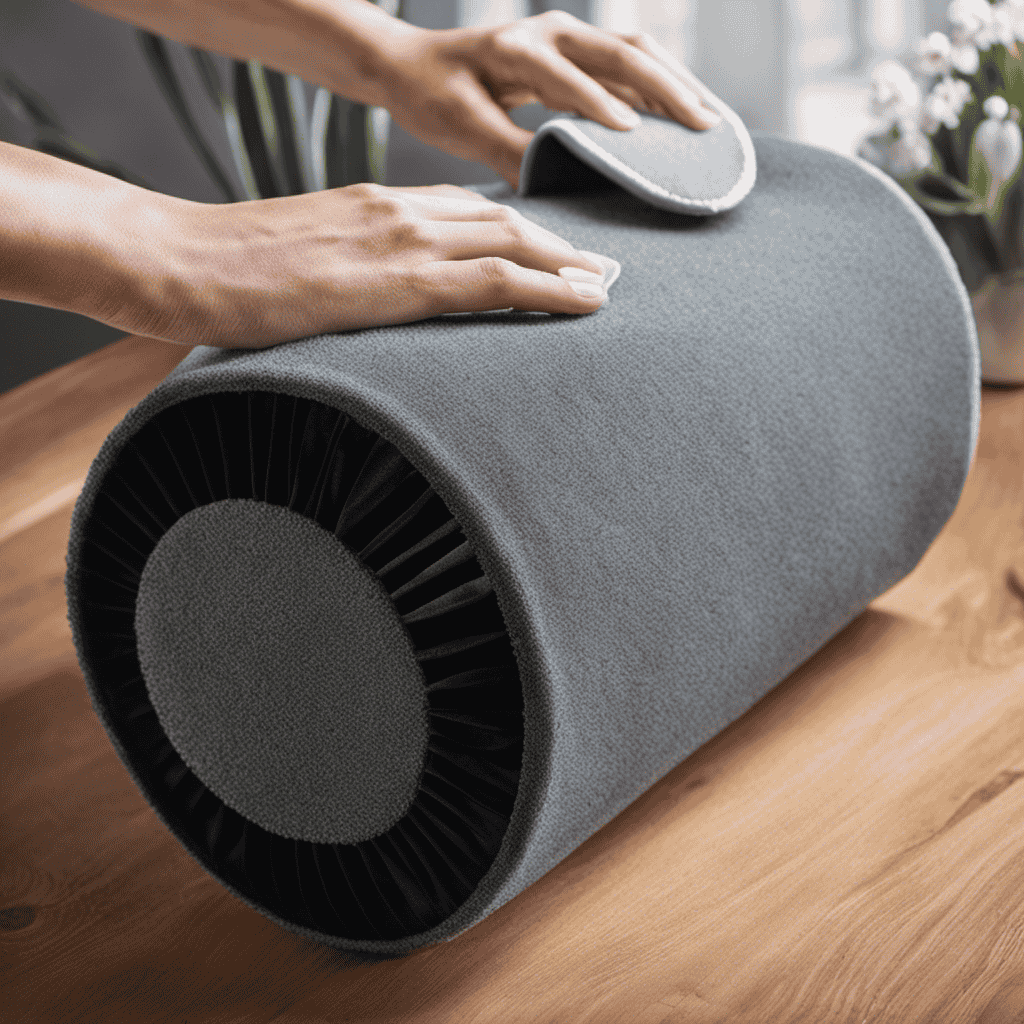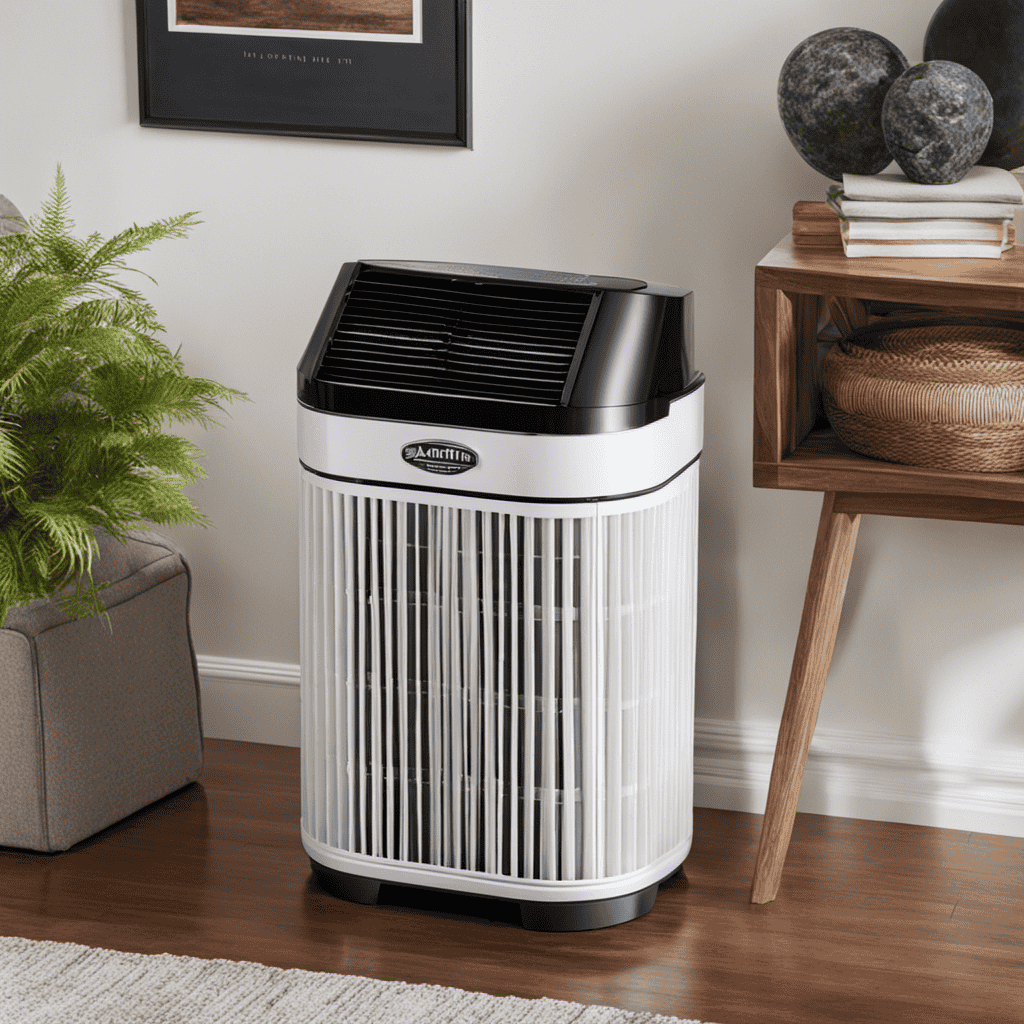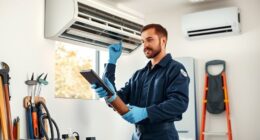I have always been curious about the optimal location for placing a compact room air purifier. There are numerous factors to take into account, which can make the decision overwhelming.
But fear not! In this article, I’m going to guide you through the ideal placement locations for small room air purifiers. Additionally, I’ll share common mistakes to avoid and offer tips for optimizing airflow in a small room.
So, let’s dive in and discover the creative solutions for limited space placement of these purifiers.
Key Takeaways
- The effectiveness of a small room air purifier is influenced by the size of the room and proximity to sources of air pollution.
- It is important to avoid placing the air purifier near obstacles or furniture and to consider the power of the purifier based on the room size.
- Ideal placement locations for small room air purifiers include areas prone to dust accumulation and near windowsills to filter outdoor pollutants, while avoiding direct sunlight or heat sources.
- It is crucial to optimize airflow by positioning the air purifier centrally, performing regular maintenance, choosing the right size based on square footage, and ensuring proper airflow for optimal performance.
Factors to Consider in Placing a Small Room Air Purifier
When deciding where to place a small room air purifier, it’s important to consider factors such as room size and proximity to sources of air pollution. Placement considerations play a crucial role in ensuring the effectiveness of the air purifier.
Firstly, the size of the room should be taken into account. A larger room may require a more powerful air purifier to effectively clean the air.
Additionally, the positioning of the air purifier in relation to sources of air pollution is essential. Placing the purifier near potential sources, such as windows or doors, can help capture pollutants before they spread throughout the room.
It is also recommended to avoid placing the purifier near obstacles or furniture that may obstruct the airflow.
Ideal Placement Locations for Small Room Air Purifiers
To optimize the performance of your compact air cleaner, consider positioning it near areas prone to dust accumulation, such as bookshelves and windowsills. This is one of the best practices for placing a small room air purifier. By placing the air purifier near these areas, you can effectively capture and filter out the dust particles that tend to settle on surfaces.
Additionally, placing the air purifier near windowsills can help filter outdoor pollutants that may enter your room through open windows. The benefits of this placement strategy include improved air quality and reduced dust buildup in your living space. However, it is important to avoid placing the air purifier in direct sunlight or near heat sources, as this can affect its performance.
Transitioning into the next section about common mistakes to avoid when positioning a small room air purifier, it is crucial to consider these factors to maximize its effectiveness.
Common Mistakes to Avoid When Positioning a Small Room Air Purifier
By avoiding direct sunlight and heat sources, you can ensure optimal performance of your compact air cleaner. When it comes to placing a small room air purifier, there are a few common mistakes you should avoid. Here are some placement tips and best practices to keep in mind:
-
Distance from walls: Place the air purifier at least a foot away from walls or any other objects to allow proper airflow and circulation.
-
Height: Position the air purifier at a height where it can effectively capture airborne particles. Placing it on a table or elevated surface can help achieve this.
-
Avoid obstructions: Keep the air purifier away from furniture, curtains, or any other obstructions that may hinder its ability to draw in air from the room.
By following these placement tips and best practices, you can ensure that your small room air purifier works efficiently to clean the air in your space.
Now, let’s move on to some tips for optimizing airflow in a small room with an air purifier.
Tips for Optimizing Airflow in a Small Room With an Air Purifier
To optimize airflow in your compact space, consider positioning your air cleaner in a central location where it can effectively circulate clean air throughout the room. This will ensure that the air purifier can efficiently remove pollutants and allergens from the entire area. Additionally, regular maintenance is crucial for the optimal performance of small room air purifiers. Cleaning or replacing the filters on a regular basis is essential to keep the air purifier functioning at its best. Neglecting maintenance can lead to decreased airflow and decreased effectiveness in removing airborne particles. When choosing the right size air purifier for a small room, it’s important to consider the square footage of the room. A general guideline is to choose an air purifier that can cover the entire room at least twice per hour. Here is a table to help you determine the appropriate room size for different air purifier models:
| Air Purifier Model | Room Size Coverage |
|---|---|
| Model A | Up to 200 sq ft |
| Model B | Up to 400 sq ft |
| Model C | Up to 600 sq ft |
Creative Solutions for Limited Space Placement of Small Room Air Purifiers
Consider thinking outside the box and exploring unique alternatives for where you can position your compact air cleaner in your limited space. When it comes to finding the perfect spot for your small room air purifier, creativity is key. Here are three creative placement ideas to maximize the effectiveness of your air purifier in tight spaces:
-
Wall-mounted: If floor space is limited, consider mounting your air purifier on the wall. This not only frees up valuable floor space but also ensures that the air purifier is at a height where it can effectively circulate clean air throughout the room.
-
Under furniture: Make use of the empty space under furniture by placing your air purifier there. This allows the air purifier to discreetly clean the air without taking up any additional space.
-
On a shelf: If you have shelves in your room, utilize them by placing your air purifier on a shelf. This keeps it elevated and allows for better air circulation while maintaining a clutter-free environment.
With these creative placement ideas, you can make the most of your small room air purifier even in tight spaces.
Frequently Asked Questions
How Do I Know if a Small Room Air Purifier Is the Right Size for My Space?
When choosing a small room air purifier, it’s important to consider the size of your space. To determine the right size, measure the air quality in your room using scientific methods.
Can I Place a Small Room Air Purifier on the Floor, or Does It Need to Be Elevated?
I can place a small room air purifier on the floor or elevate it depending on my preference. The placement of a small room air purifier is flexible and can be adjusted to suit my needs.
Is It Necessary to Have Multiple Small Room Air Purifiers in a Large Space, or Will One Be Sufficient?
One small room air purifier may not be sufficient for a large space as it may not effectively circulate and purify the air. Efficiency can be improved by using multiple purifiers strategically placed throughout the area.
Can I Place a Small Room Air Purifier Near a Window or Door to Filter Outdoor Air Entering the Room?
Yes, you can place a small room air purifier near a window or door to filter outdoor air entering the room. This helps to ensure that the air you breathe inside is clean and free from pollutants.
Are There Any Specific Safety Precautions I Should Keep in Mind When Placing a Small Room Air Purifier?
When placing a small room air purifier, it’s important to consider specific safety precautions. You should avoid placing it near flammable materials or obstructing the air intake and outlet. The best locations include areas with good air circulation, away from direct sunlight and moisture.
Conclusion
In conclusion, placing a small room air purifier in the right location can significantly improve the air quality in your living space.
By considering factors such as the size of the room, the proximity to pollution sources, and the airflow patterns, you can ensure optimal performance of your air purifier.
Avoid common mistakes like placing it near walls or furniture that obstruct airflow. Instead, find creative solutions to maximize the limited space you may have.
With proper placement and airflow optimization, your small room air purifier will work effectively to provide you with cleaner and fresher air.










